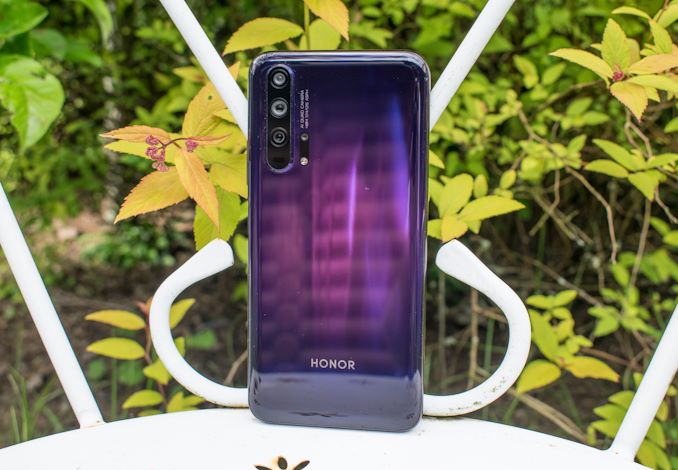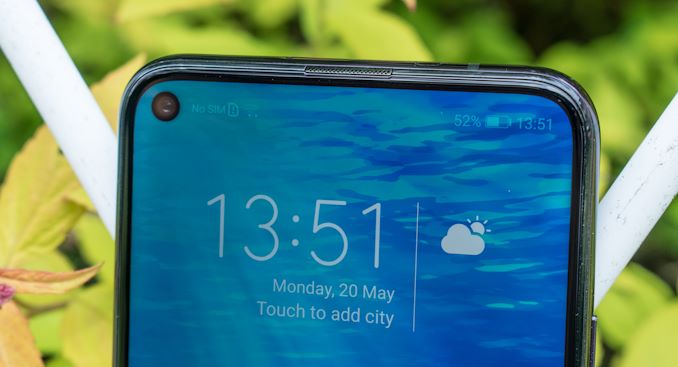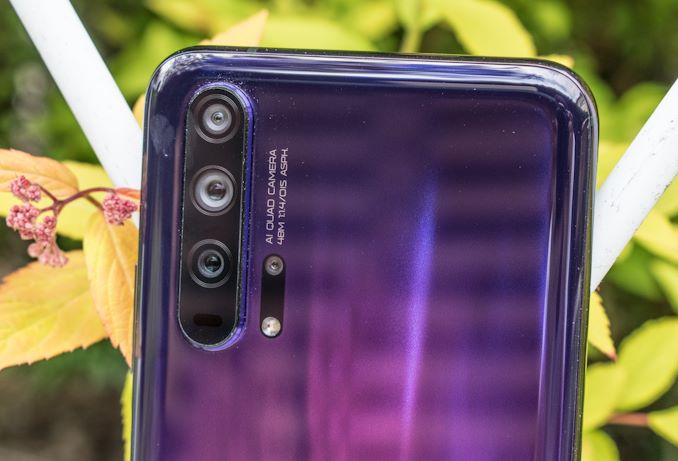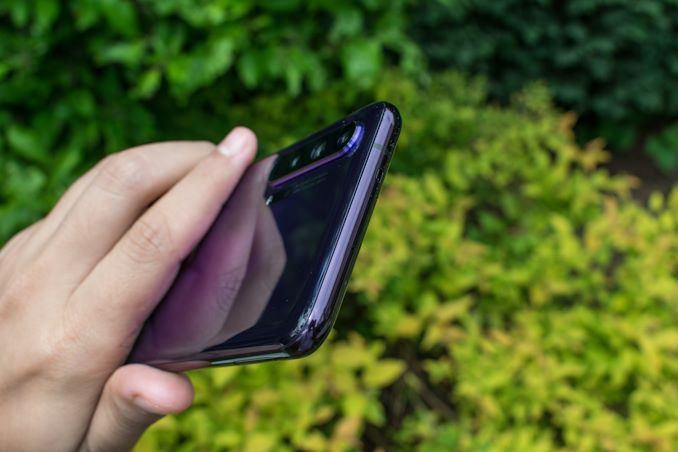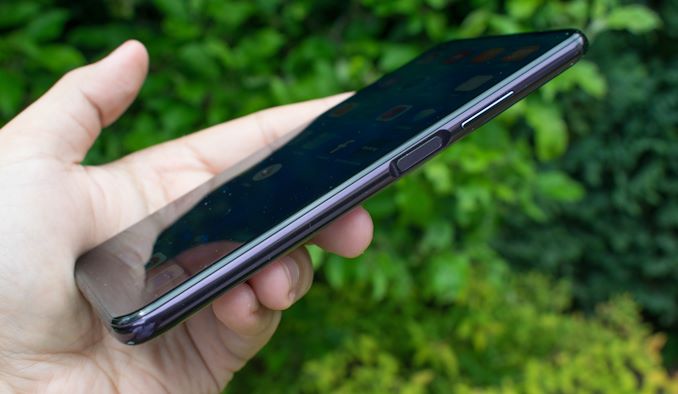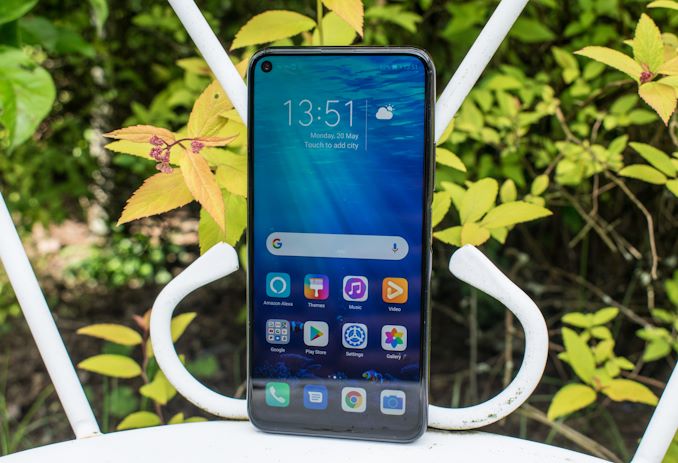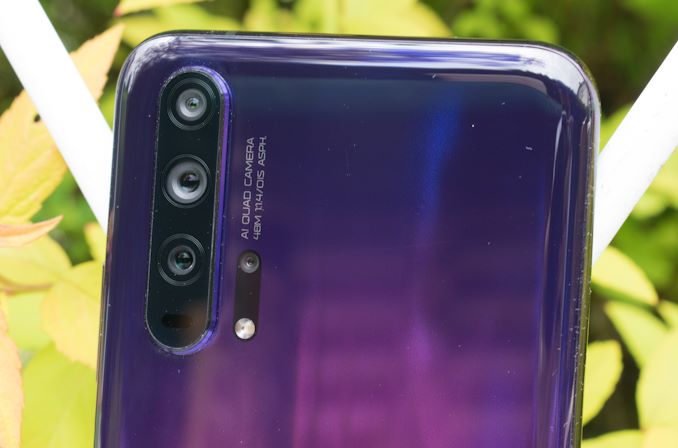
Original Link: https://www.anandtech.com/show/14336/honor-20-hands-on
The Honor 20 Pro: A Quad-camera Hands-On Review
by Andrei Frumusanu on May 21, 2019 10:45 AM EST- Posted in
- Smartphones
- Mobile
- Honor 20
- Honor 20 Pro
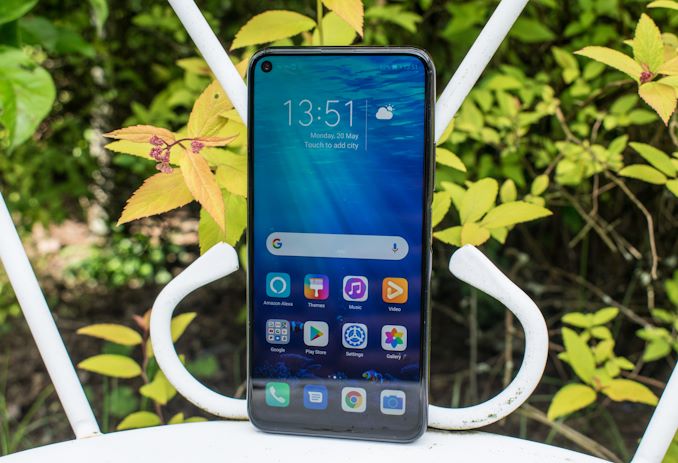
As a sister brand of Huawei, Honor in the last few years has seen quite a rising success in terms of delivering high value devices. In fact Honor’s smartphones have become so popular that the brand by itself is able to take a notable amount of marketshare percentage in multiple markets, aiming to become #3 in some countries.
Today Honor is announcing the new Honor 20 Pro series – a continuance of the company’s mainline series which made it so popular to begin with. The new Honor 20 Pro takes elements from Huawei P30’s series, such as new camera systems and adds its own touch, deriving design decisions from this year’s Honor View20.
The Honor 20 Pro continues to use the 48MP sensor we first saw in the View20 and adds a 3x optical zoom module, a new wide angle camera module, and curiously enough a new dedicated macro camera module. We’ve had the phone for a few days and were able to do some camera testing as well test essentials such as the battery life of the phone. Let’s start with the specifications:
| Honor Series | |||
| Honor 20 Pro | |||
| SoC | HiSilicon Kirin 980 2x Cortex-A76 @ 2.60 GHz 2x Cortex-A76 @ 1.92 GHz 4x Cortex-A55 @ 1.80 GHz Mali G76MP10 @ 720MHz |
||
| DRAM | 8 GB LPDDR4X | ||
| Storage | 256GB | ||
| Display | 6.26" LCD 2340 x 1080 (19:5) |
||
| Size | Height | 154.6 mm | |
| Width | 73.97 mm | ||
| Depth | 8.44 mm | ||
| Weight | 182 grams | ||
| Battery Capacity | 4000mAh 22.5W Charging |
||
| Wireless Charging | - | ||
| Rear Cameras | |||
| Main | 48MP IMX586 0.8µm pixels (1.6µm 4:1 12MP binning) f/1.4 lens OIS PDAF & Laser Autofocus |
||
| Telephoto | 8MP f/2.4 3x Optical zoom 80mm equiv. FL |
||
| Wide | 16MP f/2.2 117° Ultra wide angle 17mm equivl. FL |
||
| Extra | 2MP F/2.4 macro module | ||
| Front Camera | 32MP f/2.0 | ||
| I/O | USB-C no headphone jack |
||
| Wireless (local) | 802.11ac Wave 2 Wi-Fi Bluetooth 5.0 LE |
||
| Other Features | Side fingerprint sensor (Power button combo) | ||
| Dual-SIM | Dual nanoSIM | ||
| Colours | Phantom Black, Phantom Blue | ||
| Launch Price | 599€ | ||
The new Honor 20 Pro, much like Huawei’s and Honor’s recent higher end devices, also comes with the new HiSilicon Kirin 980 chipset. We first covered the 7nm SoC last year in our Mate 20 and Mate 20 Pro review with impressive results, and the chip continues to hold up against the best flagship SoCs from the competition, including the Snapdragon 855 and Exynos 9820. The new phone isn’t Honor’s first Kirin 980 phone as that title went to the View20 in January. Much like the View20, the Honor 20 Pro performs similarly well.
While at the time of writing Honor hadn’t shared the price point of the Honor 20 Pro, it markets that the available models seem to be limited to a configuration of 8GB RAM and 256GB storage, which would mean we’re likely seeing a positioning towards the higher end of the spectrum.
The phone’s dimensions are just slightly smaller than the View20: We find a 6.26” screen instead of 6.4”, and this ends up with the device being 1.4mm narrower than its sibling. Although both phones come with 4000mAh batteries, the added camera hardware on the Honor 20 Pro puts it at 2g heavier than the View20 for a total of 182g.
The phone’s rear cover design reminds one more of Huawei’s P20 series: We see it curved on all edges. Officially Honor’s colour options are limited to “Phantom Black” and “Phantom Blue”, although my review unit is evidently purple with the phone’s box stating “Purple”. The back glass has an interesting reflection effect that reminds one of a holograph.
On the front of the phone we find a full-screen LCD panel that goes edge-to-edge. Honor continues the hole-punch design in terms of housing the front-camera, and the left corner positioning in my opinion is the better location for it compared to Samsung’s right-handed location. The hole diameter doesn’t seem to have changed from the View20 and remains slightly smaller than Samsung’s. The only negative is that the LCD backlight is still ever so slightly dimmer around the cut-out, an issue that’s not present with OLED screens.
In terms of display quality, the Honor 20 Pro panel seems to be improved over the View20’s as it has better viewing angles with less prominent light bleed when viewing it off-axis. The resolution is the same 2340 x 1080 which results in a 19.5:9 aspect ratio.
The rear of the phone features the main distinguishing characteristics of the Honor 20 Pro: A quad-camera setup. The main camera sensor is still an IMX586 as found on the View20 (and many other competing devices now), however Honor was able to majorly change the optics as it now employs an f/1.4 aperture lens and the module is now stabilised with OIS – a major addition which helps video recording. The sensor has a resolution of 48MP with 0.8µm pixel pitches, however the bayer colour filter has a native resolution of 12MP and this 4:1 binning mode resulting in effective 1.6µm pixels is the mode that will be the every-day use-case for the phone.
Added to the fray is a 3x zoom 8MP telephoto module. This unit seems to be derived from what we’ve seen on the P30 and Mate 20 Pro. Alongside the zoom module we find a 16MP wide-angle lens, also matching the capability of the P30 and the Mate 20.
The most curious and odd addition to the camera setup is the fourth module: A 2MP dedicated macro camera. Frankly the addition of this unit is quite confusing to me as we’ll see that its capabilities are not very great.
Alongside the flash we also find a laser-autofocus module which augments the PDAF of the sensors.
At the bottom of the phone we find a USB-C port alongside the main speaker as well as microphone. Unfortunately the Honor 20 Pro doesn’t come with a 3.5mm headphone jack, nor does it employ stereo speakers. While the main speaker is alright, its bottom firing directionality doesn’t compete with more recent devices from other vendors.
At the top of the phone we find the secondary microphone as well as an IR blaster.
Finally, the other distinguishing feature of the phone is the fact that the company has moved the fingerprint sensor from the rear of the phone to the side integrated into the power button. Unlocking the phone is extremely fast and I didn’t encounter any issues with the new sensor, with my only critique being that the buttons edges are quite unusually sharp.
Quad Cameras - 48MP + OIS
The main features of the Honor 20 Pro are its cameras, and in the short time we had the phone it’s what we’ll be focusing on. What will be particularly interesting to see is how the phone holds up against the View20. Since the review of the View20 we also got our hands on a OPPO Reno with the same IMX586 sensor. The differences between the phones here will be their optics as well as their software processing calibrations.

[ Honor 20 Pro ] - [ View20 ]
[ P30 Pro ] - [ OPPO Reno ]
[ S10+ (S) ] - [ S10+ (E) ] - [ G8 ]
[ Pixel 3 ] - [ Pixel 3a ] - [ iPhone XS ]
In the first scene we can already see some large differences between the Honor 20 Pro and the View20. The new phone is able to maintain colour saturations a lot better as well as preserve more highlights. This was on a very sunny day with very little clouds at noon – the Honor 20’s results are much more representative of the scene than the View20’s too aggressive HDR.
The wide-angle lens on the Honor 20 Pro did a lot better in terms of preserving some of the brightness of the scene than the P30 Pro. Its exposure and composition is most akin to the G8, although without LG’s typical blurry noise reduction. The Snapdragon-based Galaxy S10+ still hast the best result in my opinion, although Honor isn’t too far behind.
The 3x telephoto lens of the Honor 20 Pro has a good amount of detail, however its exposure doesn’t match that of its other modules and puts out an under-exposed shot that lacks in highlights and also has little shadow detail.

[ Honor 20 Pro ] - [ View20 ] - [ P30 Pro ]
[ OPPO Reno ] - [ S10+ (S) ] - [ S10+ (E) ]
[ G8 ] - [ Pixel 3 ] - [ Pixel 3a ] - [ iPhone XS ]
The next shot again we see quite different HDR processing between the View20 and Honor 20. The new phone is able to better preserve some of the texture of the pavement and road in comparison to the more flat View20 shot. Albeit it’s an extremely well lit scenario, a lot of the phones including the Honor 20 have trouble in getting a proper exposure, with the result being too dark. Only the Galaxy S10’s are able to preserve sufficient highlights all while covering the shadows. The wide-angle shot is also underexposed with much washed out colours.

[ Honor 20 Pro ] - [ View20 ] - [ P30 Pro ]
[ OPPO Reno ] - [ S10+ (S) ] - [ S10+ (E) ]
[ G8 ] - [ Pixel 3 ] - [ Pixel 3a ] - [ iPhone XS ]
This forest shot is quite stringent on the dynamic range of the cameras. The Honor 20 without AI mode turned on results in quite under saturated pictures, something we also saw on the View20 and Huawei devices.

[ Honor 20 Pro ] - [ View20 ] - [ P30 Pro ]
[ OPPO Reno ] - [ S10+ (S) ] - [ S10+ (E) ] - [ G8 ]
[ Pixel 3 ] - [ Pixel 3a ] - [ iPhone XS ]
Honor’s new colour balance and saturation continue to showcase improvements in the next scene. In this shot we see some of the limitations of the f/1.4 aperture lens in daylight as on the outer edges of the image there’s clear chromatic aberrations.

[ Honor 20 Pro ] - [ View20 ] - [ P30 Pro ] - [ OPPO Reno ]
[ S10+ (S) ] - [ S10+ (E) ] - [ G8 ] - [ Pixel 3 ] - [ Pixel 3a ] - [ iPhone XS ]
The next shot under more indoor lighting conditions the Honor 20 Pro falls more in line with other phones. Comparing the new phone to the View20’s f/1.8 aperture lens we can more clearly see what this means for the optics of the scene. The Honor 20 has a more prominent barrel distortion to it that is visible in almost all shots.
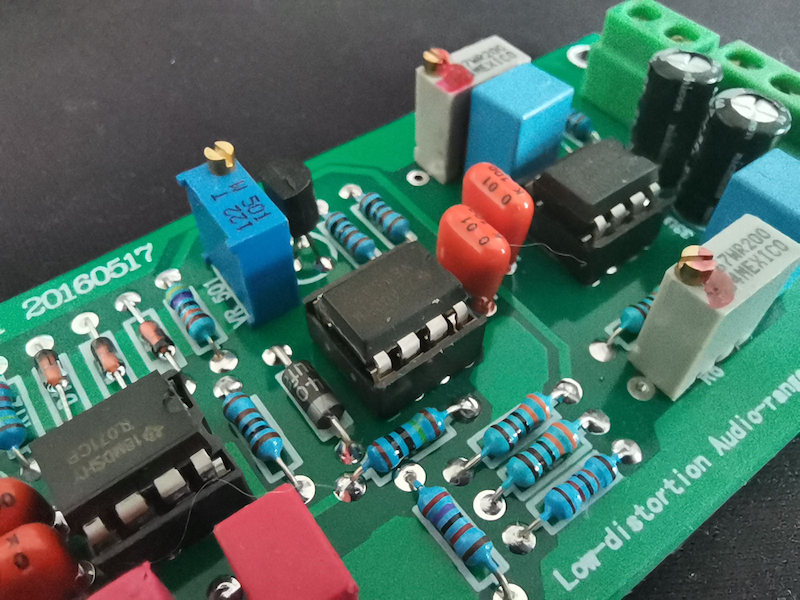
[ Honor 20 Pro ] - [ P30 Pro ] - [ S10+ (E) ]
Finally, we have a look at the new macro lens. The unit is quite perplexing as its results aren’t very good. At a resolution of only 2MP it’s arguable if it’s actually any better than simply using the other modules. At the closest focus length possible, yes the main and telephoto cameras showcase the limitations of their optics though some very prevalent off-centre hazing, however their dynamic range is significantly better than the 2MP macro lens.
Currently the P30 Pro takes the lead among smartphones when it comes to macro photography, and it does so without the need of any extra camera module. It’s quite odd to see Honor have to resort to a separate camera when Huawei’s product teams achieves better simply by having better lenses and focus mechanisms. The Galaxy S10 produces respectable results, while all other phones just aren’t able to focus at such close distances.
Overall Camera Conclusions
The Honor 20 Pro’s cameras are good, although not quite up to par with some other flagship devices. Honor has improved its processing compared to the View20, but it still seemingly has weaknesses in terms of getting sufficient saturation or exposure.
Although the f/1.4 aperture lens promises increased light capture, it’s still not quite sufficient to compete with the sensor superiority of Huawei’s 40MP units. The disadvantage of the new lens is that it introduces more barrel distortion and there’s more evident chromatic aberrations on the edges of a scene.
I think Honor did well with the 16MP wide-angle and it competes very well with other new devices featuring such modules. It’s definitely a new added feature which augments the capturing experience.
The 8MP 3x telephoto lens is good, although I found that Honor’s exposure matching between this unit and the wider camera modules to be quite far off.
Finally, the new macro camera module is a perplexing addition. I do wonder why the company didn’t simply enable better optics and focus on the main sensors rather than adding a new module. The results are quite disappointing and the module doesn’t really distinguish itself much from the main sensors.
Video Recording
Video recording of the Honor 20 Pro sees an upgrade thanks to the introduction of OIS, however it’s not all great.
Recording at 60fps at 1080 is very good on the main camera sensor and the OIS is immediately visible. However when switching over to the wide-angle module, things aren’t looking as great as we’re seeing severe detail degradation more apt of a 720p or lower recording, something which is backed up by the resulting bit-rate and file size of the video.
Recording in 4K30 doesn’t see nearly as a big detail hit on the wide-angle lens, however the exposure and saturation is quite different between the two modules, with the wide angle being a lot more washed out.
The most troublesome finding I had when video recording was the fact that the Honor 20 Pro wouldn’t properly change focus when panning between near and far objects, requiring me to manually tap to focus, which is a quite a large deal-breaker and hopefully something that’s will be fixed in the future.
Battery Life
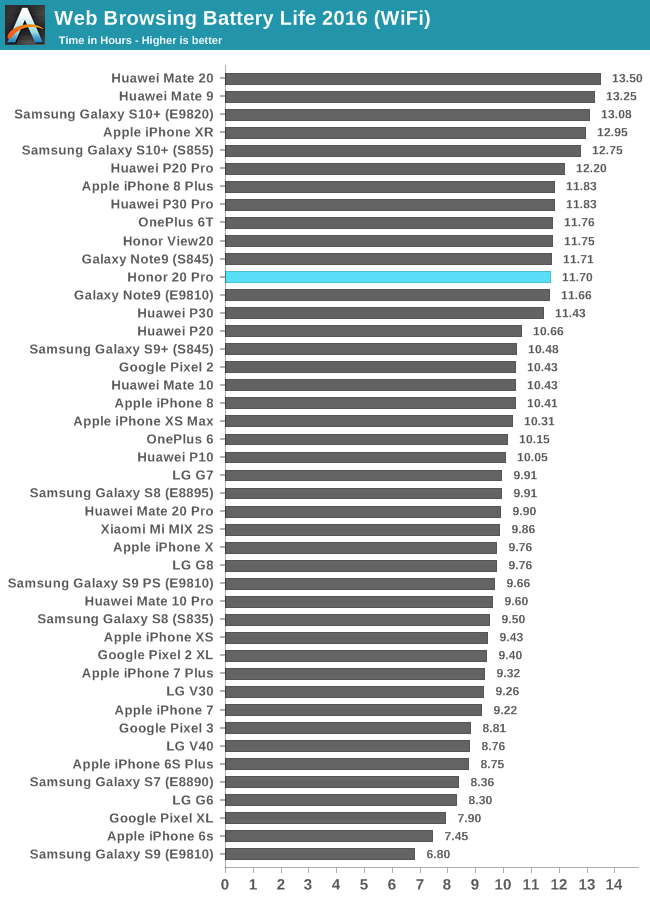
Battery life on the Honor 20 Pro is great and in line with the Kirin 980 chipset and the 4000mAh battery. The LCD screen is efficient and the H20Pro almost equal to the View20 from earlier in the year.
Conclusion & End Remarks
Overall the Honor 20 Pro is quite the odd device. Priced at 599€ it puts itself quite at the higher end of the scale. The issue with such a pricing is that in my view the Honor 20 Pro still compromises quite a lot on some features.
In terms of design, the front of Honor 20 Pro very much reminds us of the View20, although it the back design takes a lot of design cues from Huawei's P20 Pro. It’s still a very solidly built phone and the ergonomics work out just fine, although I liked the thinner edge design of the View20 more.
The LCD screen is good, and while it’s an improvement in terms of viewing angles and contrast to the View20, it’s tough to argue for an LCD screen in the middle of 2019 when essentially all competitors have switched over to OLED displays.
Further product design weirdness from Honor is the fact that the Honor 20 Pro only comes in a 8/256GB configuration. If you want a cheaper variant in the form of the 6/128GB Honor 20 at 499€, you’ll have to give up on the telephoto module, and make due a slightly smaller battery at 3750mAh versus 4000mAh capacity.
While we didn’t cover performance in this review, the device performs identical to the View20 and other Kirin 980 devices, that is to say, it’s very good and competitive.
The combination of an efficient LCD screen, 4000mAh battery and the Kirin 980 make for excellent battery life and the Honor 20 Pro lasts as long as the View20, which is at the top of the battery charts.
The cameras on the Honor 20 Pro are the star of the show and the main reason why one should consider the phone. The issue here is that while Honor has improved the processing on the main camera sensor and it does produce better results than the View20, it’s still somewhat behind some of the competition. I do have a bit of a hard time to place the Honor 20 Pro in this regard as it’s really not a bad camera, it’s more about the balance of what it provides versus the price of the phone.
The wide angle camera sensor is definitely a fantastic addition to the brand’s line-up and is extremely competitive with the best devices out there. The 3x telephoto lens was in line with previous Huawei devices, which is to say it provides good detail, however it’s not quite the best at keeping exposures in line with the main camera module.
The new macro camera is in my opinion quite the gimmick. Yes it does allow you to take shots very close up, however the resulting quality is quite low resolution, low dynamic range, and very noisy. Most of the time you’d be better off using the main sensor and just cropping the shots.
Video recording is an improvement for Honor thanks to OIS, however there were issues in regards to video quality of the wide-angle lens, as well as big issues in terms of focusing with the current tested firmware.
The problem with the Honor 20 and Honor 20 Pro I think is that they’re priced too high. At 499€ and 599€ there’s one very obvious contender that seems to offer a better package: The OnePlus 7. While you don’t get the wide-angle or telephoto cameras, you do get a better screen, better software and dual stereo speakers.
More worrisome than the actual product itself is Huawei’s and Honor’s position due to US Commerce Department’s addition of the company to the trade blacklist, with Google not supporting the vendor with software updates. Currently there’s just better alternatives out there, and buyers might find significantly better value and return for their money if they pay a little more for say a Galaxy S10 or a OnePlus 7 Pro instead of the Honor 20 Pro.

